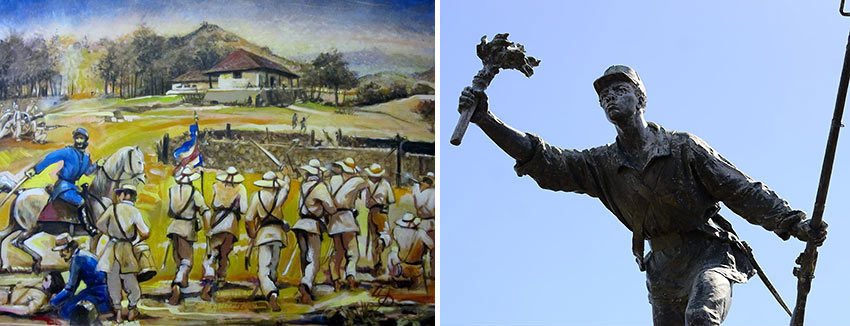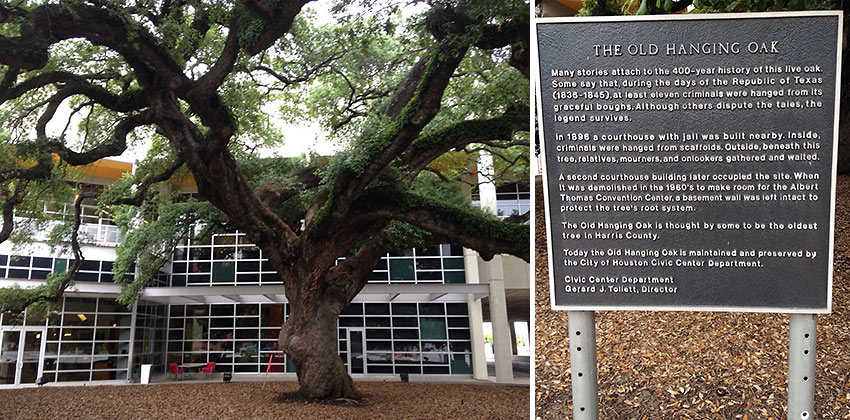Ok, if my big brother, travel editor Ed Boitano, can do it, then so can I. Though, I must confess this pilgrimage piece is also inspired by John Lennon. His passage in In My Life goes something like this:
There are places I’ll remember
All my life, though some have changed
Some forever, not for better
Some have gone, and some remain
All these places had their moments
With lovers and friends, I still can recall
Some are dead, and some are living
In my life, I’ve loved them all
— John Lennon, excerpt from In My Life

The Little Drummer Boy — Costa Rica
In 1856, American William Walker and his ragtag army of mercenaries attacked Honduras, Nicaragua and later Costa Rica with the intention of creating a slave-holding empire with himself as its president. With the blessing of US President Franklin Pierce, Walker was successful in Honduras and Nicaragua, then turned his sights on Costa Rica. President Juan Rafael Mora Porras called upon the general population to take up arms and head north to fight against the foreign invaders. After routing a contingent of Walker’s soldiers at Santa Rosa, Costa Rican troops continued marching north, following Walker’s army to the city of Rivas. The Battle of Rivas was brutal and fierce with Walker’s men retreating into a hostel near the town center where they commanded an advantageous firing position. Juan Santamaría, a poor laborer and son of a single mother, had joined the army as a drummer boy. A general suggested that a soldier should advance towards the hostel with a torch and set it on fire. Juan Santamaría volunteered for the suicide charge, but with the condition that someone would look after his mother if he died. He then advanced and succeeded in setting fire to the hostel, and was mortally wounded by the enemy. His heroics were the defining factor in the Costa Rican victory at Rivas. Walker escaped, and eventually returned to Honduras in an attempt to reestablish his control of the region, but was captured and executed by a firing squad in 1860. Juan Santamaría, the Little Drummer Boy, is Costa Rica’s national hero. You will see monuments, statues and parks named after him throughout the nation. Juan Santamaría Day, a national holiday, is held every April 11 to commemorate his courageous death.

John and Yoko — Montréal
Located in the famous Fairmont Queen Elizabeth Hotel, this one-bedroom suite was the site of the legendary 1969 Bed-in for Peace in Montréal, where John and Yoko recorded the song Give Peace a Chance. Guests singing along included Timothy Leary, Petula Clark, Tommy Smothers and whoever happened to be present in the room. The living room and bedroom feature memorabilia composed of press articles, framed gold records and pictures of the famous couple. The suite is available for lodging and can also be rented for parties. Sometimes I will only make a pilgrimage to the room’s exterior, just to see the plaque on the door.

The Old Hanging Oak — Houston
From the top of the double-decker tour bus we passed blocks of Houston’s commanding, almost futuristic-looking office towers that dwarfed the remaining older buildings in the surprisingly modest downtown center. As the tour continued, an oak tree situated behind a gate caught my attention. The guide informed me that it was the Old Hanging Oak, a 400-year-old tree, the oldest in Houston. The official word was that it had been used to hang over eleven criminals between 1836 and 1845. Unofficially, I learned it was the source of an untold number of lynchings, generally of African-Americans, during the Jim Crow racial segregation laws at the end of the 19th century. In particular, when African-American troops in WW1 , treated as heroes in France, returned home to the states, they had a greater sense of self-esteem, but were pushed down and faced virulent hostility by white Americans. Perhaps only the Old Hanging Oak could tell the real story of all the atrocities in which it has played a part. It’s not unusual to bury unsavory parts of history. There was barely a mention of the now defunct Enron, whose branding was once proudly displayed throughout the city. The Old Hanging Oak made me think how much Houston had progressed, where it is now one of the nation’s most ethnically diverse cities, with one in four Houstonians foreign born. The Old Hanging Oak Tree of Houston is a symbol of hatred and racism, but now represents a reconciliation of the past and a better tomorrow.

The Doolough Tragedy — Ireland
My wife and drove through the sweeping hills of the Connemara in County Galway, a landscape once described by Oscar Wilde as a place of ‘terrible beauty.’ We pulled off the road to study a Famine Trail. Known as the Doolough Tragedy of 1849, where scores of destitute and starving people staggered through horrendous weather for 15 miles to a manor’s house in the hope of food, only to be turned away. Apparently, the grand man of the manor did not want to interrupt his lunch and never met them. Later, corpses were found by the side of the path with grass in their mouths. Too weak to walk or speak, many were crawling to churches so that they could be laid to rest on consecrated ground. Once a year a Famine Walk takes place on the trail to commemorate the victims.









 Ringo Boitano is the younger (by 2 minutes) twin brother of Traveling Boy founder, Ed Boitano. As a former venture capitalist, Ringo’s remarkable essays on luxury travel capture the hopes and dreams of today’s hedonistic traveler as they venture into the secular world of travel.
Ringo Boitano is the younger (by 2 minutes) twin brother of Traveling Boy founder, Ed Boitano. As a former venture capitalist, Ringo’s remarkable essays on luxury travel capture the hopes and dreams of today’s hedonistic traveler as they venture into the secular world of travel.









